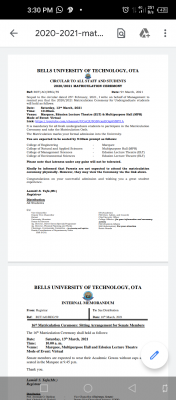
The future of education is taking shape, and it’s a dynamic landscape where traditional methods meet innovative technologies and pedagogical approaches. To stay ahead and make the most of your learning experience, you need to optimize your learning environment. Whether you’re a student, a parent, or an educator, these six tips will help you create a learning environment that’s aligned with the needs of tomorrow’s education.
1. Embrace Technology
Technology is at the forefront of the future of education. From interactive e-books to virtual reality simulations, it’s crucial to embrace technology in your learning environment. Using AppsAnywhere can also help you improve your learning experience as well as faculty collaboration. Equip yourself with the necessary tools, such as a reliable computer, high-speed internet, and educational software or apps that support your goals. This will not only make learning more engaging but also prepare you for a tech-driven world.
2. Personalize Your Learning Journey
One size doesn’t fit all in education. The future of learning revolves around personalized experiences. Tailor your learning to your strengths, weaknesses, and interests. Utilize online platforms that offer personalized learning plans and adapt to your progress. This approach ensures that you’re challenged just enough to grow, without feeling overwhelmed.
3. Foster Collaboration
Collaboration is a key skill for the future, and the learning environment should reflect this. Whether you’re a student or an educator, fostering collaboration is vital. Online forums, video conferencing, and shared documents are just a few ways to connect and work with others, no matter where they are. Learning to collaborate effectively is an essential skill for the future job market.
- Cultivate communication skills: Effective collaboration requires clear communication. Develop your ability to express ideas and information concisely and listen actively to others. The exchange of ideas should be smooth and productive.
- Embrace diversity: Collaborating with people from different backgrounds and perspectives can lead to richer, more innovative solutions. Embrace diversity in your collaborative efforts, as it can help you see problems from various angles.
- Utilize digital collaboration tools: Familiarize yourself with a variety of digital tools and platforms designed to facilitate collaboration, such as project management software, online whiteboards, and team communication apps. These tools can streamline your collaborative efforts and enhance productivity.
- Learn to compromise and negotiate: In any collaborative setting, differing opinions and priorities may arise. Learning to compromise and negotiate effectively is essential for maintaining a harmonious working relationship and achieving common goals.
4. Prioritize Lifelong Learning
Stay curious and committed to continuous education. Attend webinars, take online courses, and read widely to expand your knowledge beyond your core subjects. Embracing lifelong learning is your insurance policy against becoming obsolete in the job market .
- Set clear learning goals: Define what you want to achieve through lifelong learning. Whether it’s acquiring a new skill, staying updated on industry trends, or expanding your knowledge in a particular field, having clear goals will keep you motivated and focused.
- Allocate time for learning: Make learning a regular part of your routine. Dedicate specific time slots to study, attend webinars, or engage in self-improvement activities. Consistency is key to reaping the benefits of lifelong learning.
5. Develop Critical Thinking Skills
In an era of information overload, critical thinking is invaluable. Develop the ability to analyze, evaluate, and synthesize information. Encourage open discussions and debates in your learning environment. This will help you become a discerning thinker, capable of making informed decisions and solving complex problems.
- Question assumptions: Challenge preconceived notions and question the validity of information. Don’t take things at face value, but rather delve deeper to uncover hidden truths or biases.
- Seek diverse perspectives: Engage with a variety of viewpoints and sources to gain a broader understanding of complex issues. This will help you form a well-rounded perspective and avoid echo chambers.
- Practice problem-solving: Tackle real-world problems and challenges. Apply your critical thinking skills to propose creative solutions, considering the potential consequences of each approach.
- Learn from your mistakes: Embrace failures as opportunities for growth. Analyze what went wrong, identify areas for improvement, and adapt your strategies accordingly. Critical thinking is not only about finding the right answers but also about learning from your missteps.
6. Stay Agile and Adaptable
The future is unpredictable, and you must be ready to adapt. Teach yourself the skills of resilience and adaptability. Embrace change, be open to new ideas, and learn to navigate uncertainty. By cultivating these qualities, you’ll be better prepared for any challenges that come your way.

As you optimize your learning environment using these six tips, you’ll be well-equipped to thrive in the educational landscape of tomorrow. Whether you’re a student, parent, or educator, these principles will empower you to embrace the evolving world of education and ensure your success in the future. So, take the reins of your education, and get ready for a brighter, more promising tomorrow.
Well, check this out to create your own ebook to improve your e-learning. It is a way to keep notes of your important tasks and check them anytime for easy understanding.




